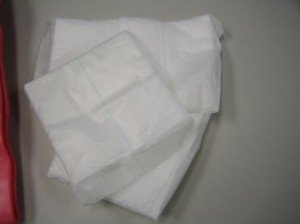Puncture wounds can be shallow or small but in some cases, they can be deep and large. The treatment for puncture wounds depends on the severity of the wound and the size of the object that created it. Most puncture wounds can be created by pointed objects such as ice picks, wooden sticks and many more. When delivering first aid for this type of wound, the priority is to control the bleeding and infection.
First aid for a puncture wound

- Primarily, you have to ensure that you are safe when delivering first aid care for the wounded individual. Always practice the universal precautions and use protective equipment if available.
- The first move is to control the bleeding by applying direct pressure on the wound while supporting it higher than the heart level for 15 minutes. This approach is sufficient to end the bleeding. In case the bleeding continues, you can use the pressure points. Always remember that tourniquets can only be used if medical assistance is could not be provided for a number of hours.
- For puncture wounds that are deep in the back, abdomen, pelvis, chest or thigh, in which the bleeding could not be controlled, call for emergency assistance right away. Wounds on the chest must be sealed by hand or dressing that does not allow air to flow. If the individual complains of shortness of breath or becomes worse after closing the chest, you have to unseal it.
- If the bleeding has been controlled, you have to wash the puncture wound using warm water and mild soap. If the bleeding starts again, you have to apply pressure again until it stops
- For wide puncture wounds, it would require stitches. In case stitches are needed, it is important to go to the emergency department at the nearest hospital.
- For minor wounds that do not need stitches, you can apply an antiseptic ointment and cover it with an adhesive bandage.
- Observe for signs of infection and change the dressing every day. The puncture wound should be cleaned every time the dressing is changed. In case the wound starts to swell or pus is draining or there is redness, it is best to seek medical care right away since infection has already developed.
- Over-the-counter medications for pain can be given for pain relief.
Tips when dealing with puncture wounds
For contaminated puncture wounds, you have to visit your doctor right away so that a vaccination for tetanus or a booster shot can be given. Wounds on the foot, those that could not be washed immediately or wounds caused by animals are at high risk for contamination. Always remember that puncture wounds caused by animal bites is at high risk for developing rabies. With this in mind, it is best to consult your doctor.
